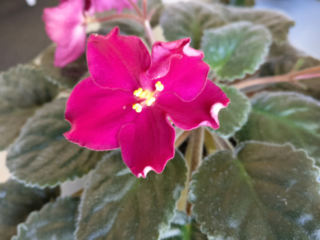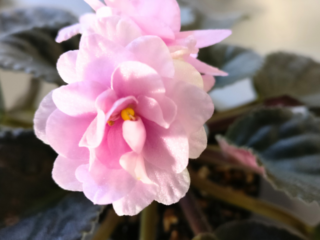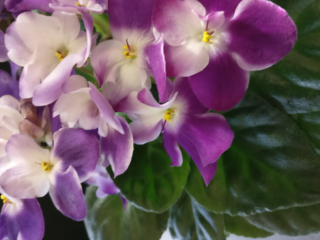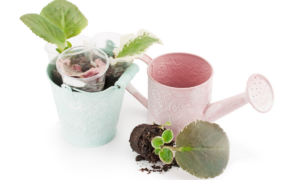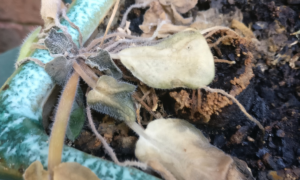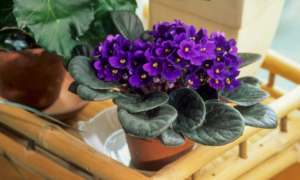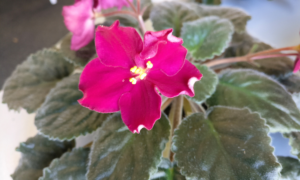African violets (saintpaulia ionantha) are one of the most popular houseplants among gardeners due to their easy maintenance and bright, cheerful blooms. But can african violets actually live in water? Growing African Violets in a soil-based potting mix is certainly the traditional way to cultivate them but could you also keep your plants healthy by propagating and caring for them exclusively with water? In this blog post we’ll explore if it’s possible for african violets to thrive without any soil at all!
We’ll look into how best to propagate African Violets in water, what benefits there might be from growing these beautiful flowers hydroponically as well as some challenges that may come along with it – plus troubleshooting tips on how you can make sure your African Violet stays happy and healthy while living its aquatic life. So let’s dive right into finding out: Can african violets live in water?
Table of Contents:
- So, Can African Violets Actually Live In Water?
- Propagating African Violets in Water
- Caring for African Violets in Water
- Benefits of Growing African Violets in Water
- Challenges of Growing African Violets in Water
- Troubleshooting Tips for Growing African Violets in Water
- FAQs in Relation to “Can African Violets Live in Water?”
- Conclusion
So, Can African Violets Actually Live In Water?
Yes, African violets can actually live in water! But only as a propagation method. Eventually, you’ll need to transfer your African violet into soil so it can thrive. But propagating African violets in water is a great way to grow new plants from existing ones. It’s also an easy and inexpensive method for anyone interested in gardening. To propagate African violets in water, you will need a glass jar or container with clean water, scissors or pruning shears, and the parent plant.
1. Propagating African Violets in Water:
To begin propagating your African violet, start by cutting off one of the leaves near the base of the stem with scissors or pruning shears. Make sure that each leaf cutting has at least two nodes (where veins meet) on it so that it can root properly when placed into the water. Once you have cut off a few leaves from your parent plant, place them into your glass jar filled with clean water and set aside somewhere warm and out of direct sunlight until roots form on each leaf node after several weeks time.
2. Caring for African Violets in Water:
Once roots have formed on each leaf node submerged within the jar of water, they are ready to be transplanted into soil-filled pots where they will continue to thrive as long as they receive proper care such as adequate light exposure (indirect sunlight), regular watering schedule (once every 7-10 days), fertilizing once per month during growing season (spring/summer months). Additionally, make sure to keep their soil moist but not soggy at all times – this helps prevent any root rot issues from occurring due to overwatering which could ultimately kill off your newly propagated plants if left unchecked.
3. Benefits of Growing African Violets in Water:
The benefits of growing african violets in nothing but water are numerous
- There is no need for expensive potting mix since all that is required is just some plain tapwater which makes this an incredibly cost effective way to propagate new plants without having spend money on additional materials like soil or fertilizer etc.
- It’s much easier than traditional methods since there isn’t any digging involved – simply snip off some leaf cuttings from the mother plant and place the leaf stem into a jar full of clean H20!
- This technique requires minimal maintenance compared with other propagation techniques because you can set and forget for weeks at a time. And once rooted, these little guys require very little attention apart from occasional repotting. Due to their shallow rooting system, they’re ideal houseplants even for those who don’t have green thumbs!
Propagating African Violets in Water
Propagating African violets in water is a great way to increase your collection of these beautiful plants. It’s an easy process that requires just a few materials and steps.
Materials Needed:
-A healthy, mature African violet plant
-Scissors or pruning shears
-Clean container with room temperature water (tap water is fine)
-Rooting hormone powder (optional)
Steps:
- Choose a healthy, mature African violet plant from which you want to take cuttings. Make sure the leaves are firm and free of any discoloration or disease.
- Using scissors or pruning shears, carefully snip off several 2–3 inch stem tips from the mother plant at an angle just below where the leaf meets the stem—this will help promote root growth when placed in water.
- If desired, dip each cutting into rooting hormone powder before placing it into its new home—a clean container filled with room temperature tap water (not distilled or filtered).
- Place as many cuttings as you can fit comfortably in one container without overcrowding them; this will ensure they all get enough oxygen for proper root development while submerged underwater.
- Change out the water every 3–4 days to keep it fresh and prevent bacterial buildup on your cuttings’ roots; you may also add liquid fertilizer once per week if desired for extra nutrition during propagation.
- Keep your newly propagated African violets in bright indirect light away from direct sunlight until their roots have grown strong enough to be transplanted into soil pots after about 6 weeks of successful propagation in water.
Propagating African Violets in water can be a rewarding experience, and with the right care and attention they can thrive.
.jpg)
Caring for African Violets Cuttings in Water
African violets are a popular houseplant that can be grown in water. Growing African violets in water is an easy and efficient way to propagate them, as well as care for them. Here’s what you need to know about caring for African violet cuttings while they’re growing in water.
Light & Temperature: When propagating African violets in water, it’s important to provide adequate light and temperature. Place the plants near a window where they will get plenty of indirect sunlight throughout the day. The ideal temperature range for these plants is between 65-75°F (18-24°C).
Water Changes: It’s important to change the water regularly when growing African violets in water. Change out the old stagnant water with fresh clean room temperature tap or filtered drinking water every 2 weeks or so depending on how quickly it gets dirty or cloudy from fertilizer salts and other dissolved solids accumulating over time. Make sure not to use softened or distilled waters since those lack essential minerals needed by your plant’s roots.
Benefits of Growing African Violets in Water
Growing African violets in water can be a great way to propagate and care for these beautiful plants. Propagating African violets in water is relatively easy, as the plant’s roots will quickly take hold of the new environment. This makes it ideal for those who are just starting out with growing African violets or don’t have much experience propagating them from cuttings.
Another benefit of growing African violets in water is that there are fewer pests than when grown in soil. Since they are not exposed to the same types of insects and diseases that may affect their growth, you can expect healthier plants overall. Additionally, since they do not require fertilizers or other soil amendments, your costs will be lower than if you were using traditional methods of propagation and care.
The benefits of growing African Violets in water are numerous and can help simplify the care of these beautiful plants. Next, we will discuss the challenges of growing African violets in water.
Challenges of Growing African Violets in Water
There are some challenges that come along with this method of propagation.
Root Rot: A challenge associated with growing African violets in water is root rot. Root rot occurs when the roots of the plant are exposed to too much moisture for too long, which can cause them to decay and eventually kill the entire plant. To prevent root rot, make sure that you change out the water every few days so that it stays fresh and oxygenated for your plants’ roots. And once the roots are well-established, re-pot your plant into soil.
Fertilizer: Fertilizing an African violet grown in water can be tricky because there isn’t any soil present to absorb nutrients from fertilizer solutions like traditional potting soils do; therefore they must be applied directly onto the foliage or through a liquid solution added into their water instead of being mixed into their soil medium like normal potted plants would require .

Fertilizers must be used sparingly as over-fertilization could easily burn delicate foliage. This is because direct contact with concentrated nutrient solutions (rather than being absorbed slowly by surrounding soils first, before reaching them at lower concentrations like regular potted plants would experience normally) can burn the plant. Keep a close eye on this and under-fertilize African violet cuttings in water as a precaution.
Overall, growing African violets in water has many benefits such as ease of care and fast growth rates compared to other methods. However, it does have some drawbacks such as susceptibility to root rot if not managed properly. With careful attention paid towards maintaining proper environmental conditions, these issues should not pose too much trouble for those looking into trying out this unique method of propagation.
Troubleshooting Tips for Growing African Violets in Water
Troubleshooting Tips for Growing African Violets in Water
African violets are a popular houseplant that can be grown in water. While growing African violets in water is relatively easy, there may be times when you encounter issues with your plants. Here are some tips to help troubleshoot common problems and keep your African violets healthy and thriving.
Yellowing Leaves: Yellow leaves on an African violet can indicate several different things, such as too much direct sunlight or not enough fertilizer. If the yellowing is accompanied by wilting, then your cutting isn’t thriving in its watery environment. You could try a weak solution of liquid fertilizer in fresh water, but if it doesn’t improve, consider starting again with a new cutting.
Root rot occurs when roots become soggy and die off over time due to lack of oxygen reaching them properly. This is made worse if any other pathogens are also present. This will usually only occur during propagation if you’ve left your African violet cutting in the water too long. After several weeks, it’s best to re-pot into soil once the root system is established.
With the right care and attention, African Violets can be successfully grown in water.

FAQs in Relation to “Can African Violets Live in Water?”
Can African violets be grown in water?
Yes, African violets can be grown in water. This method of propagation is known as hydroponics and it involves suspending the plant’s roots in a nutrient-rich solution instead of soil. The key to success with this technique is providing the right balance of light, temperature, humidity and nutrients for optimal growth. Additionally, it’s important to use clean containers and fresh water regularly to prevent disease or pests from attacking the plants. With proper care, you can enjoy beautiful blooms year round!
How long should African violets sit in water?
During propagation, your African violet cuttings can exist in water that is changed regularly for several weeks until the roots form. For African violets potted in soil, they should not be left to sit in water for more than a few minutes. When watering, the soil should be damp but not soggy. Allow excess water to drain away and then discard any remaining water from the tray or pot. Overwatering can cause root rot, which can lead to wilting leaves and stunted growth of your African violet plants.
Can I put an African violet leaf in water?
Yes, you can put African violet leaves in water. This is a process known as leaf propagation and it’s an easy way to grow new plants from existing ones. To do this, simply remove a healthy leaf from the plant and place it in room temperature water. Change the water every few days until roots form at the base of the leaf, then pot up your new plant! With proper care and attention, you’ll soon have more beautiful African violets for your garden or home.
Are African violets supposed to sit underwater?
No, African violets should not be submerged in water. Instead, they should be watered from the bottom by filling a tray with water and allowing the plant to sit in it for 10-15 minutes. After that time has passed, empty out any remaining water so that the roots are not sitting in standing water which can cause root rot or other issues. Additionally, avoid getting water on the leaves as this can lead to fungal diseases and leaf spots.
Conclusion
In conclusion, growing African Violets in water is a viable option for gardeners looking to propagate and care for their plants. While there are some challenges associated with this method, such as the need to frequently change the water and prevent rot, these can be easily overcome with proper maintenance. With the right knowledge and techniques, you can successfully grow beautiful African Violets in water. So if you’ve been wondering “can african violets live in water?” then the answer is yes!
Are you looking for a unique way to bring life and beauty into your home? African Violets are the perfect choice! Not only do they add vibrant color, but with proper care and maintenance, these plants can live for years. With our helpful tips and tricks on propagating, growing, and caring for African Violets from experts around the world – now is the time to start exploring this beautiful plant as part of your home decor. Join us today in discovering how easy it is to make an African Violet thrive!

